As an Army aviator, Dabbs has a unique view on these versatile aircraft.
The setting was the A Shau Valley in South Vietnam during the summer of 1968.
A six-manMACV-SOGspike team was pinned down, cut off and being chewed to pieces.
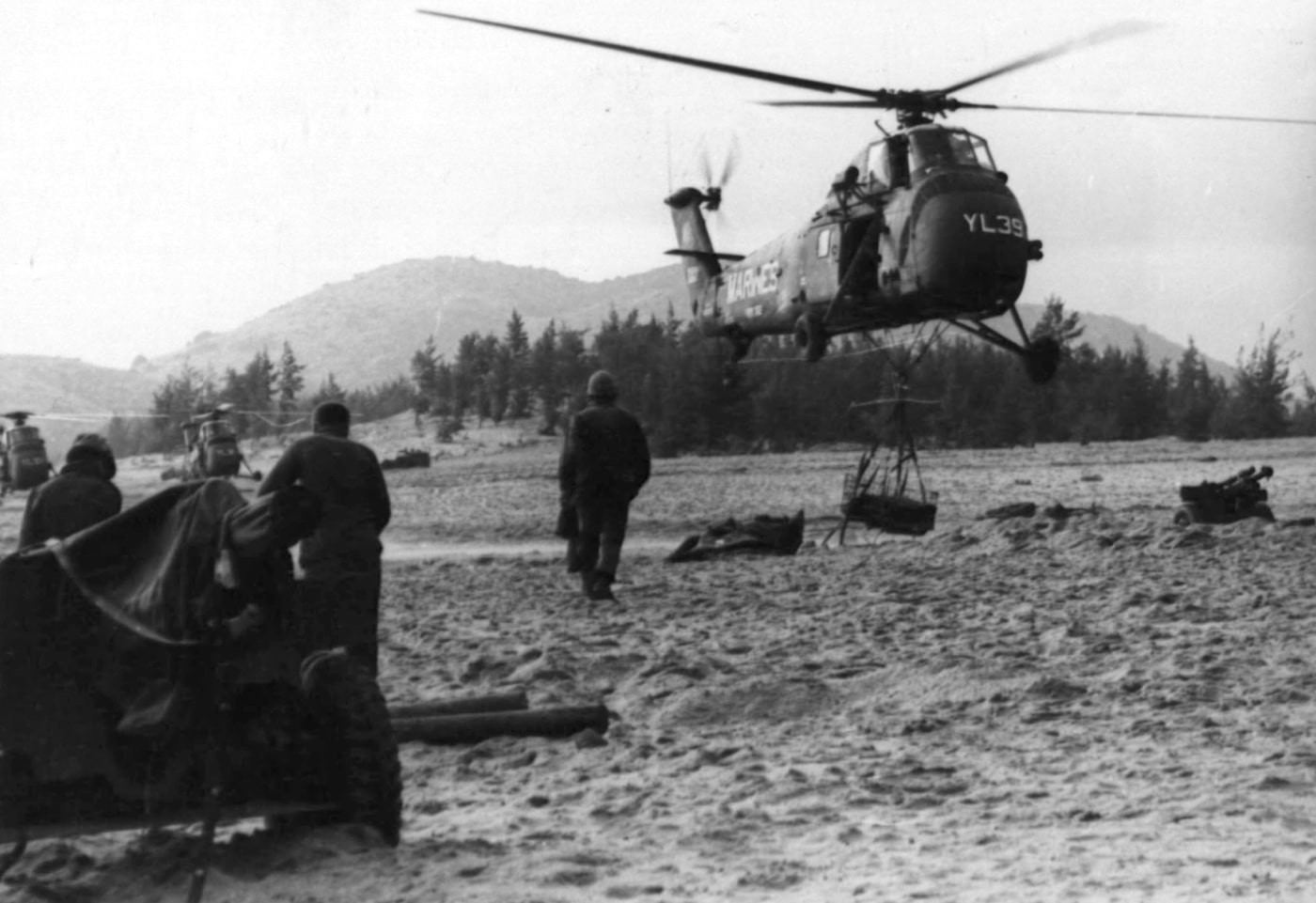
A Sikorsky UH-34 helicopter begins lifting supplies for U.S. Marines during Operation Double Eagle on Jan 30, 1966. Image: Staff Sgt. W. W. Kelley/USMC
The airstrike severely wounded the team leader and killed another SF operator outright.
It also blew the radio operators right leg off.
The only man left sufficiently intact to take charge was the SF medic.
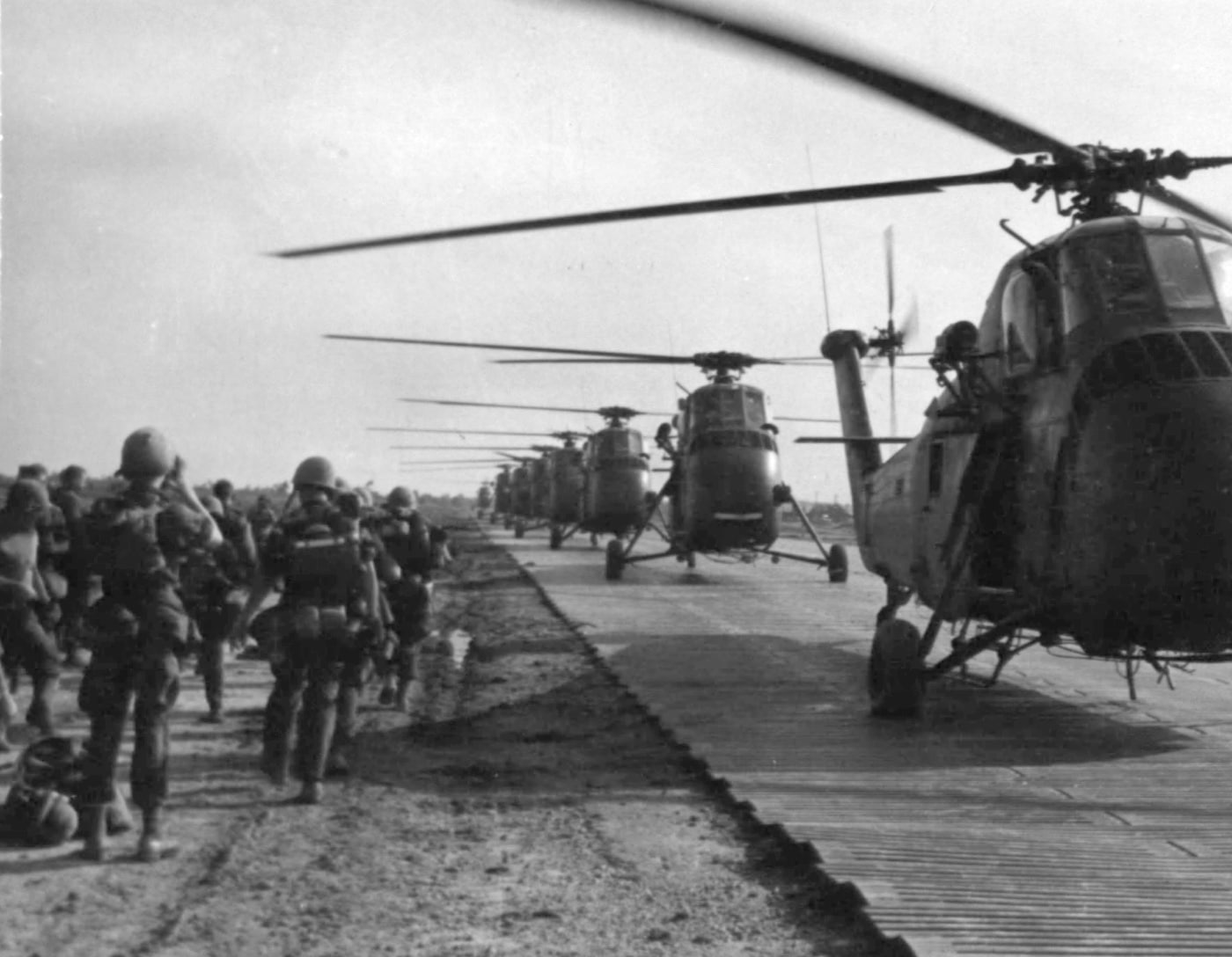
Leathernecks stand by to board UH-34 helicopters during Operation Essex in 1967. Search and destroy missions were conducted in Antenna Valley, southwest of Da Nang. Image: Staff Sgt. W. Schrider/USMC
The only pilot crazy enough to attempt an extraction under such dire circumstances was South Vietnamese Capt.
Dinh was piloting an antiquated Kingbee version of the H-34 Choctaw helicopter.
The fat ugly helicopter plopped into a nearby clearing as the medic worked to get his comrades aboard.
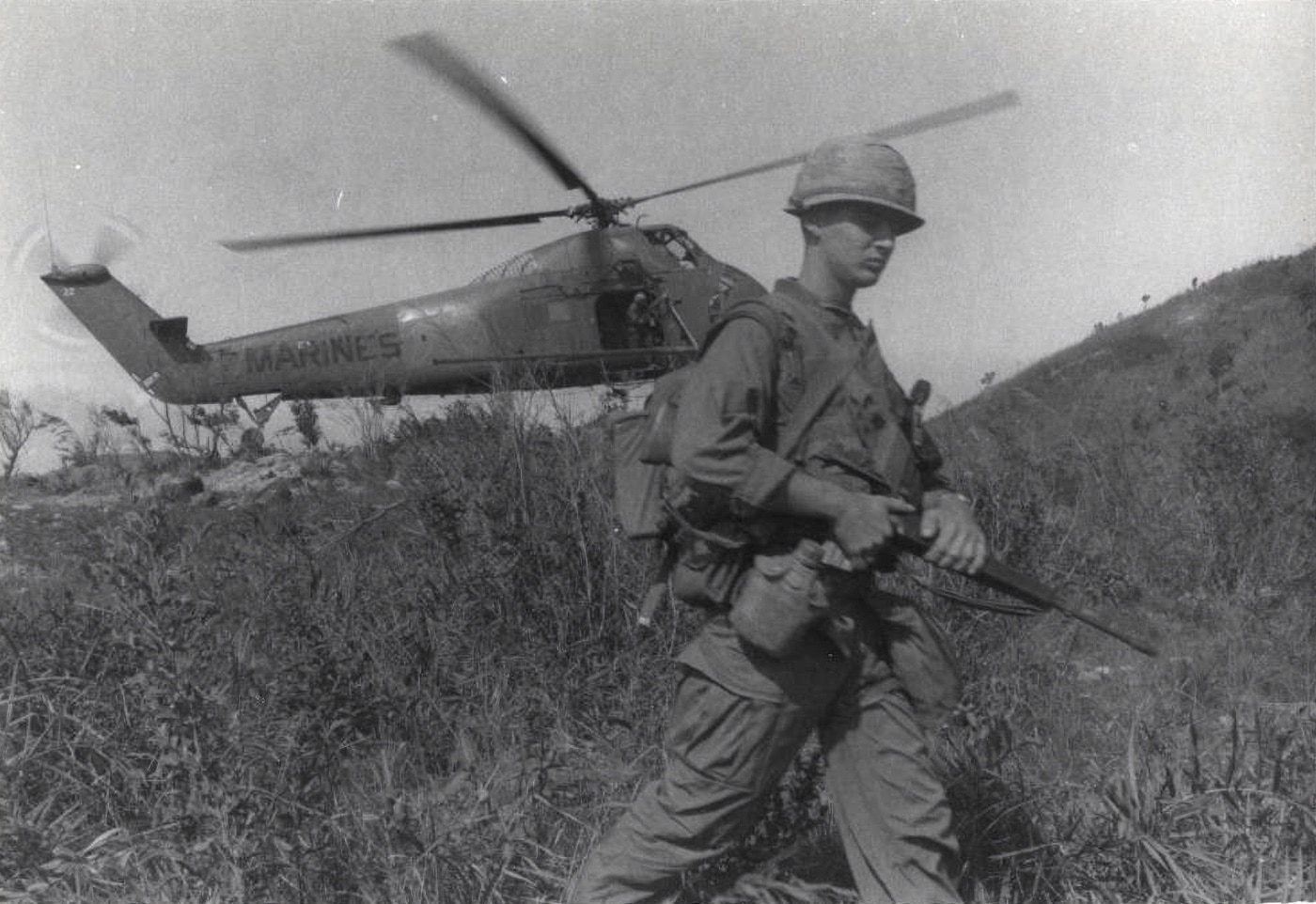
An equipment-laden infantryman of the 7th Marines moves from his helicopter in a landing zone south of Da Nang in February 24, 1968. Image: Sgt. Bob Leak/USMC CC BY 2.0
Once he had all five wounded SF troopers loaded up, Capt.
Hed have to wait alone for a follow-up bird.
And then two other inbound aircraft aborted because of insane amounts of ground fire.

A wounded Leatherneck from 1st Battalion, 7th Marines is lifted from the mountainous jungle southwest of Da Nang into amedical evacuationhelicopter. Image: Lance Cpl. R. J. Del Vecchio/USMC CC BY 2.0
This extraordinary South Vietnamese pilot torqued his antiquated overloaded aircraft back around and headed back to the LZ.
In desperation, Capt.
Dinh pivoted the big shot-up helo around on its forward landing gear struts and pointed the nose downhill.
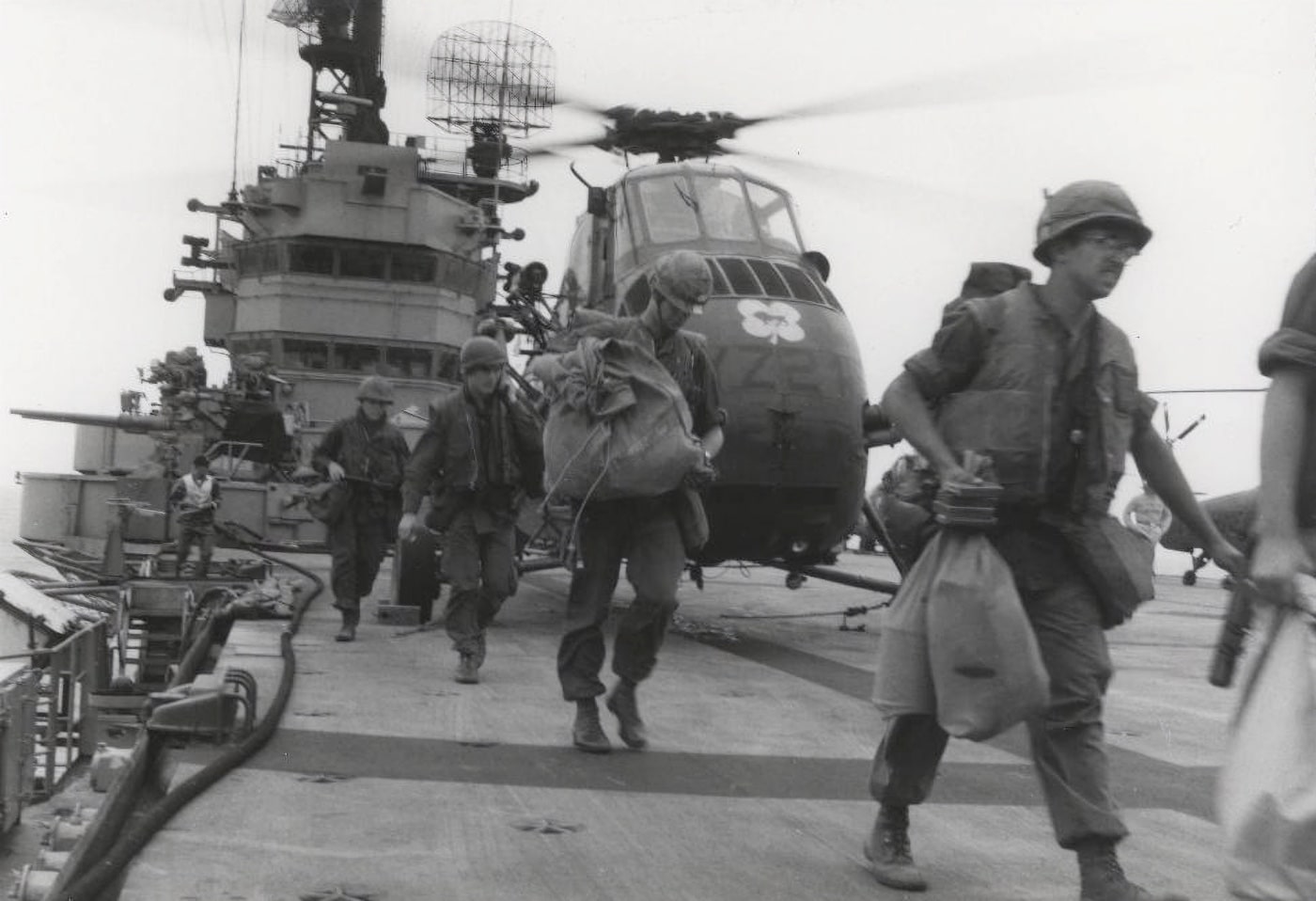
Infantrymen of the 2d Battalion, 4th Marines board helicopters of Marine Medium Helicopter Squadron 363 on the USSIwo Jima(LPH-2). Image: Cpl. Joe Brand/USMC CC BY 2.0
He accelerated across the LZ until reaching effective translational lift and barely cleared the trees.
Dinh is the reason the medic survived to see another sunrise.
The valiant medic was SP4 John Walton, son of department store magnate Sam Walton.

In 1968, a ground crew member hooks an O-1 Bird Dog airplane to a South Vietnamese Air Force H-34 Choctaw helicopter at Da Nang Air Base in the Republic of Vietnam. Image: NARA
He was also, by all accounts, a really good guy.
The Sikorsky Helicopter
The antique helicopter that Capt.
Dinh used to save John Waltons life in the A Shau was the Sikorsky H-34 Choctaw.

U.S. Marine Corps UH-34 Seahorse helicopters on the runway at Dong Ha in 1967. Image: Pfc. Kenneth L. Fuller/USMC
The H-34 was originally designed as an anti-submarine warfare platform to be operated off of aircraft carriers.
Despite its ungainly demeanor, the H-34 was profoundly successful.
It remained in production from 1953 until 1970 and was utilized by the militaries of 25 different nations.
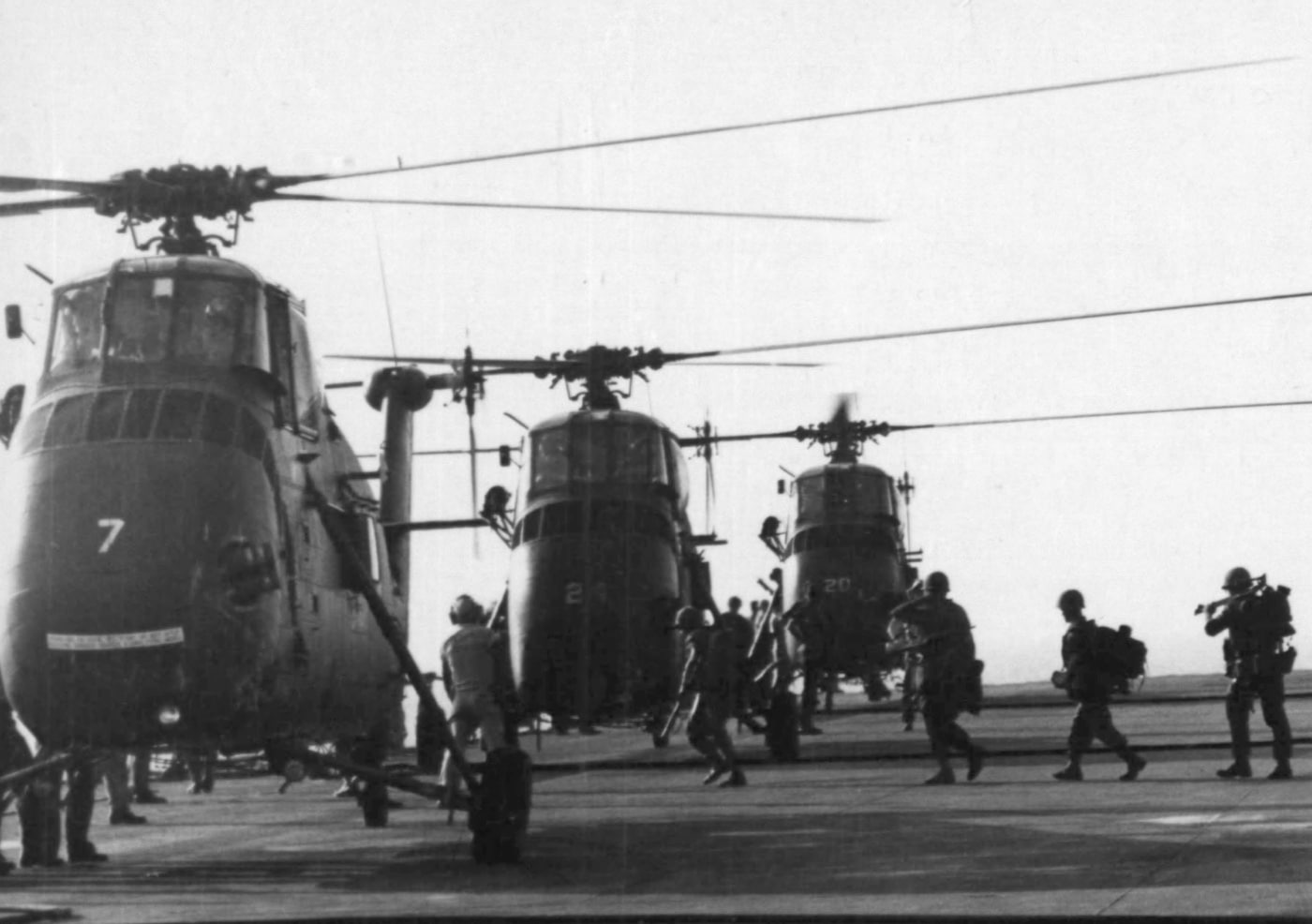
In 1968, Marines of 2nd Battalion, 4th Marines board CH-34 helicopters for Operation Kentucky. The photo was taken aboard the amphibious assault ship, USSIwo Jima. Image: Cpl. L. Preston Brown/USMC
In American service, the H-34 recovered astronauts and transported Presidents.
The aircraft was re-engined with a turboshaft powerplant and produced under license in the UK as the Westland Wessex.
The H-34 was characterized by its unusually high cockpit set well above the crew compartment.
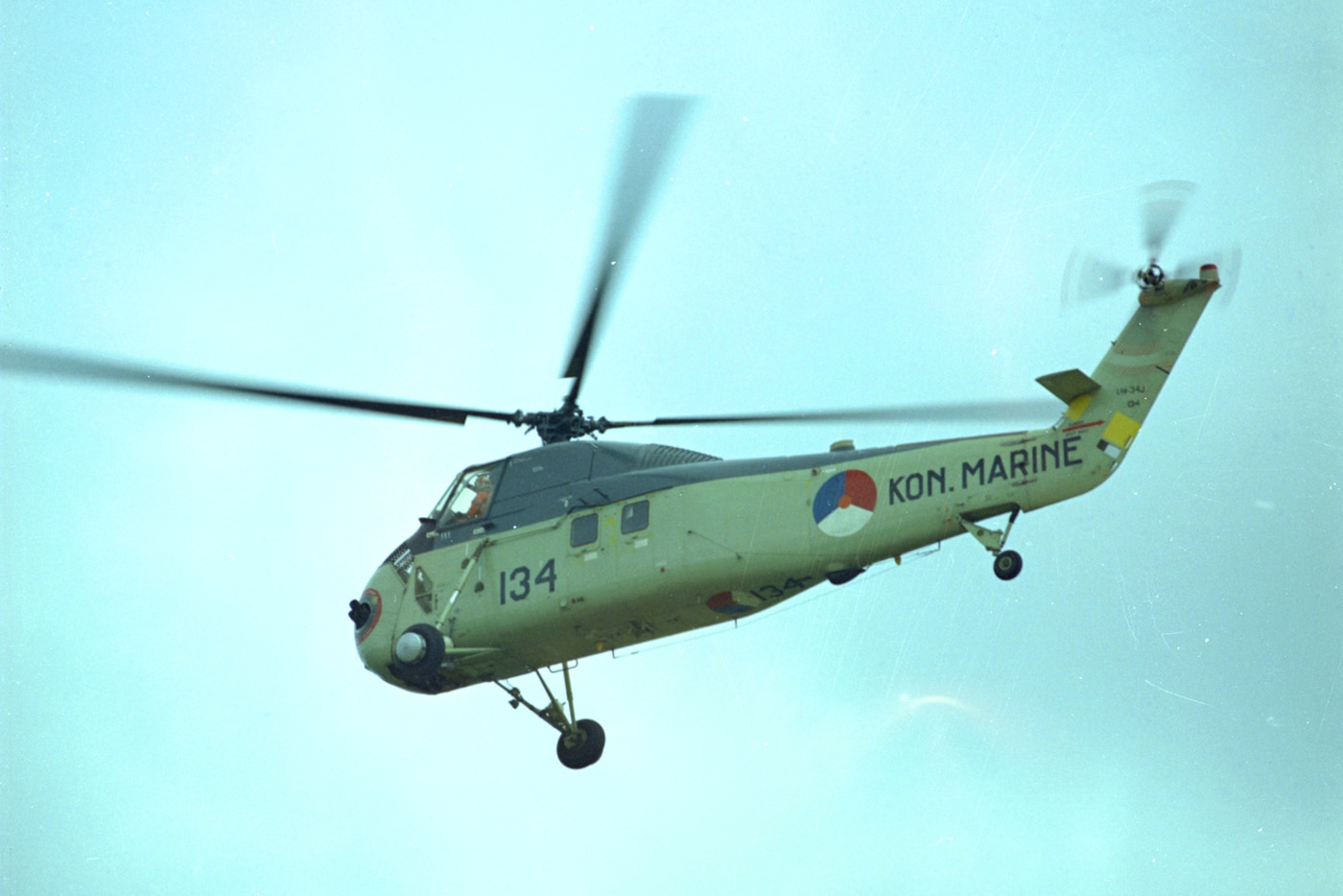
The U.S. exported the H-34 helicopters to allied nations. Here, a Royal Netherlands Marine helicopter is in flight during the 4th International Helicopter Rescue Meet in 1970. Image: NARA
The drive shaft from the big radial engine passed between the pilots.
Some 2,108 copies were produced.
The H-34 turned out to be an exceptionally versatile design.
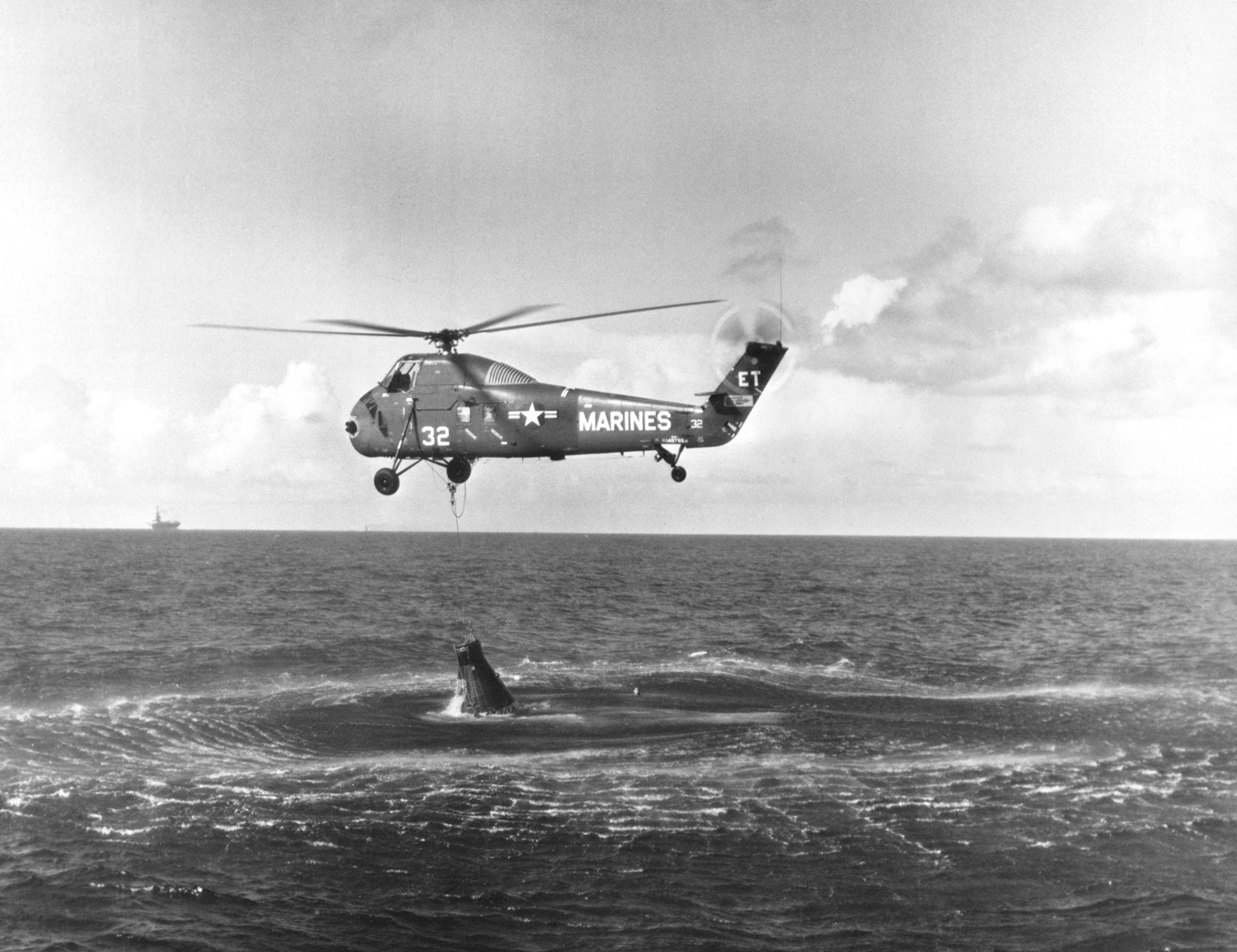
A HUS-1 Seahorse, a U.S. Marine Corps version of the H-34, attempts to lift Liberty Bell 7 from the Atlantic Ocean. Ultimately, the pilot dropped the spacecraft because it was too heavy. Image: NASA
Dependent upon environmental conditions, it could carry between 12 and 16 combat troops, or eight litters.
However, the hot environment of Vietnam strained the machine.
The armed version of the H-34 carried twoM-60C belt-fed machinegunsalong with a pair of 19-shot 2.75-inch rocket pods.

A U.S. Marine HUS-1 Seahorse helicopter rescues astronaut Virgil “Gus” Grissom from the Atlantic Ocean. Grissom’s Liberty Bell 7 spacecraft sank moments before. Image: NASA
Precious Cargo Lost
We take spaceflight for granted these days.
Rockets both government and otherwise ferry folks into space for work and play.
Back in July of 1961, however, spaceflight was a really big deal.
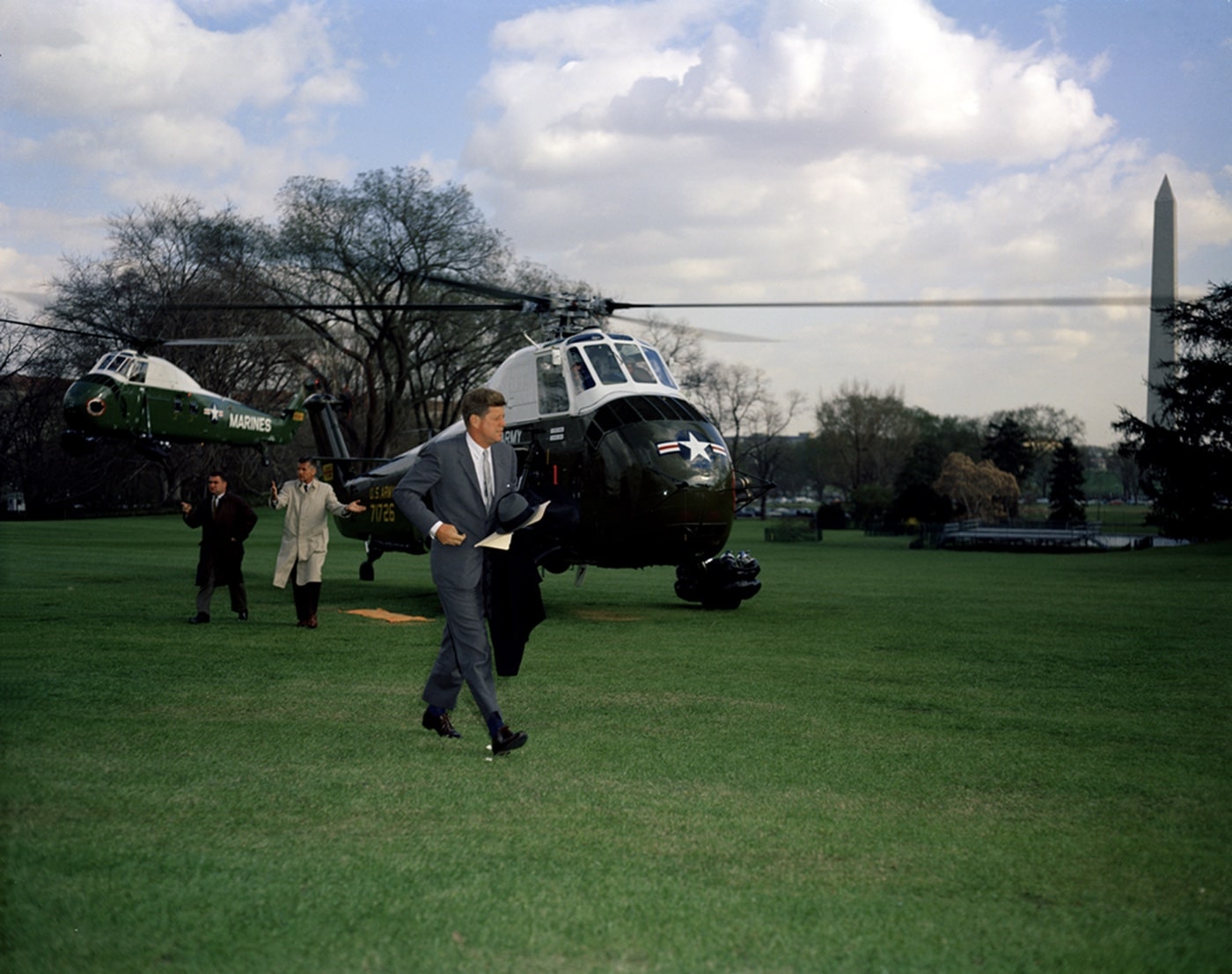
President John F. Kennedy returns to the White House aboard Marine One, a VH-34D. With him are Chief of White House Secret Service Detail Jerry Behn and Press Secretary Pierre Salinger. Image: NARA
The launch was uneventful.
The Mercury capsule weighed 2,835 lbs.
As you might imagine, a lot of really smart folks had capably done the math.
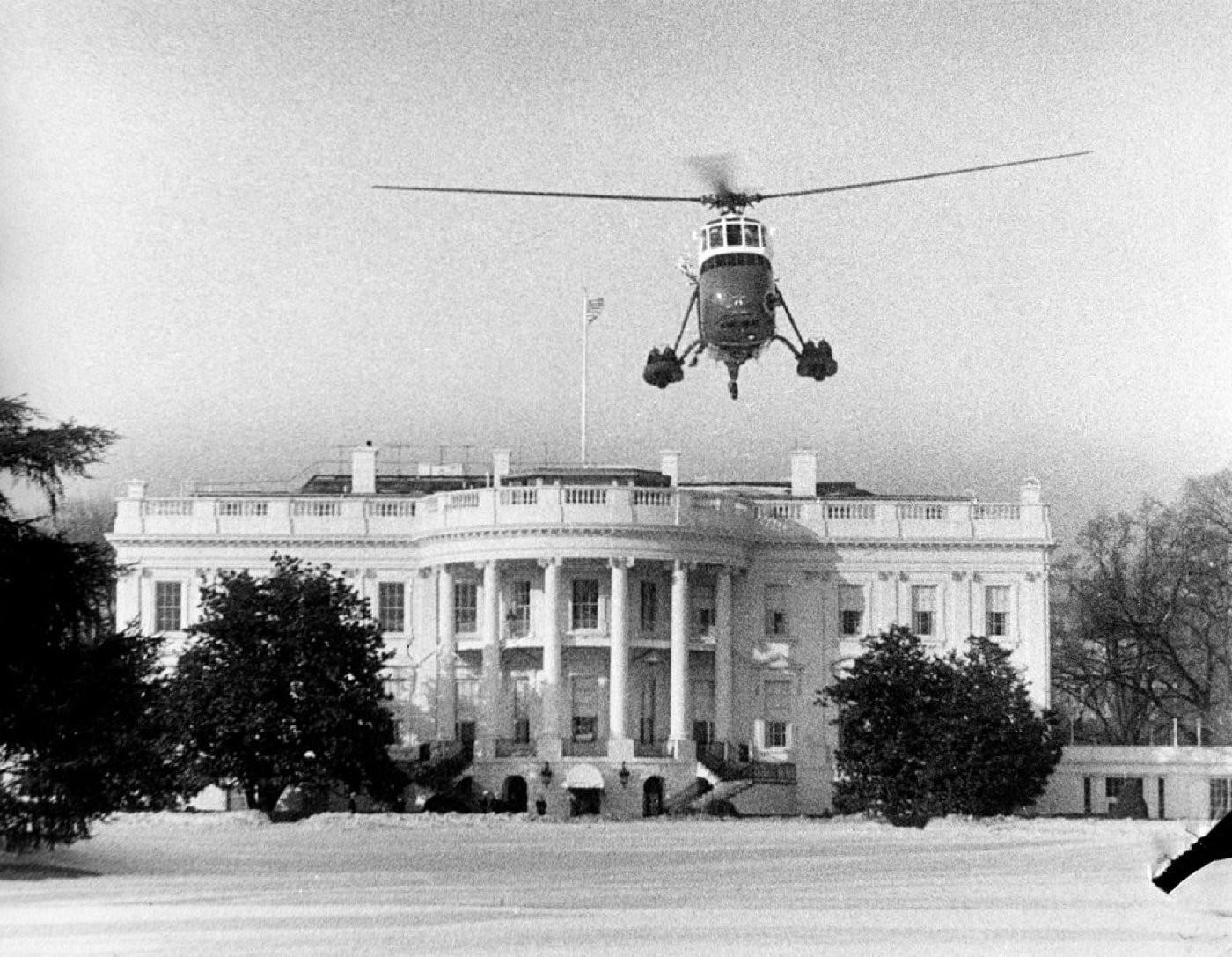
First Lady Jacqueline Kennedy and daughter Caroline Kennedy depart the White House in a U.S. Marine Corps VH-34D helicopter. The VH-34D was later redesignated as the HUS-1Z. Image: Abbie Rowe
The Mercury capsule was profoundly cramped.
Getting in and out of the thing was a Gordian chore that typically required external assistance.
hatch was secured with a series of 70 titanium bolts.
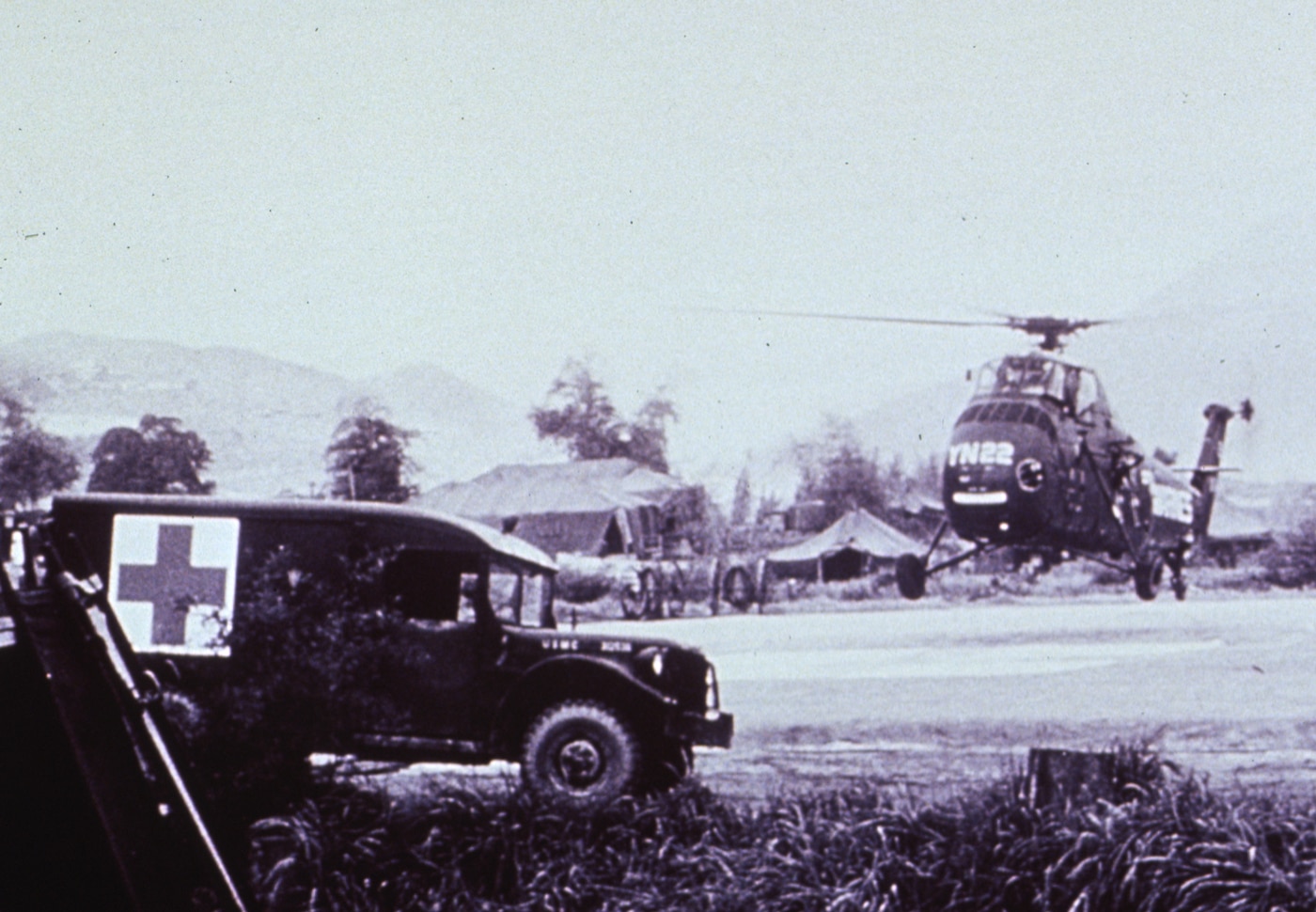
A U.S. Marine Corps CH-34 helicopter transporting wounded servicemen lands at a medical installation in Vietnam circa 1966. Image: National Library of Medicine
Each bolt was drilled and filled with something called MDF, or Mild Detonating Fuse.
Grissom successfully egressed the spacecraft, but the weight margins were tight.
The H-34 pilot reluctantly punched the capsule off, and it sank in 16,000 feet of water.
In the aftermath of the loss of the capsule, Grissom was accused of having inadvertently triggered the charge.
He steadfastly denied the accusation.
It was later postulated that the explosive bolts were likely ignited via static electricity from the hovering helicopter.
Rotary-wing aircraft behave like huge Van der Graaf generators and produce powerful static electrical potentials.
The capsule was eventually recovered from the ocean floor in 1999 and restored.
It is on display at the Cosmosphere in Hutchinson, Kansas, today.
Despite looking like a pregnant potato, the objectively ugly aircraft was respected by its crews.




